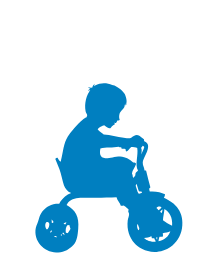What is a paediatric MCUG (micturition cystourethrogram) test?
A paediatric MCUG (micturition cystourethrogram) test is a procedure that uses an x-ray technology called fluoroscopy to give your doctor a clear visual image of your child’s urinary tract and bladder.
A paediatric MCUG (micturition cystourethrogram) test can help your physician:
- Diagnose vesicoureteral reflux (VUR) which is a condition where urine flows the wrong way from your child’s bladder back to their kidneys
- Determine why your child may be experiencing recurring urinary tract infections (UTIs)
- Find out if an antibiotic treatment, Deflux injection, or anti-reflux surgery has been successful
- See if there are abnormalities or blockages within your child’s urethra
This test is sometimes recommended if your child has had a urinary tract infection, which is a risk factor for VUR — a common condition that affects 1% of children in the US.
If your child has VUR, a MCUG test will help determine whether they have a mild or severe grade of VUR.
A paediatric MCUG (micturition cystourethrogram) test will help your physician verify whether or not this is occurring. It will also provide additional information that can help your doctor prevent kidney damage.
What you can expect
In a paediatric MCUG (micturition cystourethrogram) a small tube (catheter) is inserted into your child’s urethra. This may feel uncomfortable and give your child the urge to urinate. A special dye will be put into your child’s bladder to show a better x-ray image of their urinary tract while they urinate.
If your child is an infant, he or she may need to be restrained lightly during x-rays, but this will not interfere with the procedure.
After x-rays are taken, you and your child will be asked to wait while the image is processed and evaluated by your paediatric urologist.
Your child may feel a stinging sensation the first couple of times they urinate after the procedure. However, drinking fluids can help reduce this sensation.
How to help your child
You can help prepare for a paediatric MCUG (micturition cystourethrogram) test by giving your child a simple explanation of what will occur during the procedure.
If he or she is old enough, tell them that there may be a minimal level of discomfort while the catheter is being put in place and that you’ll be there to support them.
Allowing them to have a toy, book, or stuffed animal during the procedure may also help put them at ease.
Your child may also benefit from a mild sedative to make catheter placement easier. Feel free to discuss this option with your paediatric urologist if you feel it will help.














